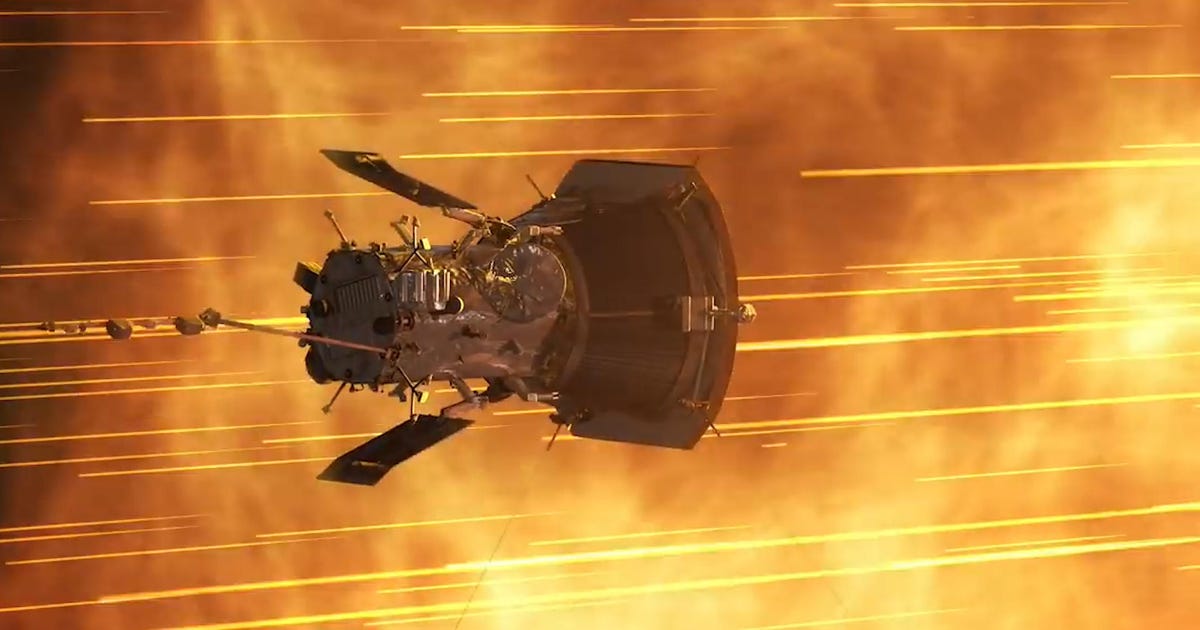NASA solar probe bombarded by dust, causing dangerous plasma explosions
The Parker Solar Probe lives in the extremely hot environment around the sun known as the corona.
NASA GSFC/CIL/Brian Monroe
The Parker Solar Probe is an engineering marvel, designed by NASA to “touch the sun” and reveal some of the star’s most closely guarded secrets. The scorch-proof craft, launched by NASA in August 2018, has been slowly sidling up to our solar system’s blazing inferno for the past three years, studying its magnetic fields and particle physics along the way. It’s been a successful journey, and the probe has been racking up speed records. In 2020, it became the fastest human-made object ever built.
But Parker is learning a lesson about the consequences of its great speed: constant bombardment by space dust.
Space dust is a pervasive element of our solar system and likely many other planetary systems in the universe. Tiny particles of dust, a quarter the width of a human hair and generated by asteroids and comets, are locked in a forever dance around the sun. Parker, whipping around the sun at almost unfathomable speeds, constantly collides with the grains, and as they hit its metallic body, they heat up, get vaporized and ionized, and become plasma.
Basically, Parker is being bombarded by dust at such speed that its body is constantly experiencing plasma explosions.
Using Fields, the probe’s instrument for measuring magnetic fields, and Wispr, an imaging device that can snap photos of the sun and study the density of electrons in its corona, a team of scientists at the University of Colorado, Boulder’s Laboratory for Atmospheric and Space Physics (LASP) and the Johns Hopkins University Applied Physics Laboratory studied the severity of these impacts.
The results of the latest study are being presented by David Malaspina, from LASP, at the 63rd Annual Meeting of the APS Division of Plasma Physics on Thursday morning. You can find an abstract here.
Camera images show the debris generated when dust slams into Parker.
NASA/JHUAPL/LASP
And those results are concerning for Parker’s safety. Malaspina and the team noticed how some of the impacts would knock pieces off Parker — paint chips, metal — that would affect the probe’s navigational cameras. If they were flicked off at the right angle, they’d reflect sunlight right into the navcams, blinding Parker for a moment.
The wrong kind of impact could be fatal for Parker, blinding it long enough that it reangles its heat shield in the wrong way. Without a heat shield protecting it, the rest of the spacecraft could get fried.
Fortunately, Parker has continued to break its own speed records and, provided it can continue to withstand constant bombardment, it will only continue to go faster.
In October, Parker used a Venus flyby to gather more speed and get even closer to the sun. The spacecraft is expected to achieve its next record-breaking perihelion — its closest approach to the sun — on Nov. 21.
At that point, the probe will be travelling at 163 kilometers per second (101 miles per second) and will be around 8.5 million kilometers from the surface (5.3 million miles). For reference, Mercury is seven times farther away at 36 million miles.
For all the latest world News Click Here

